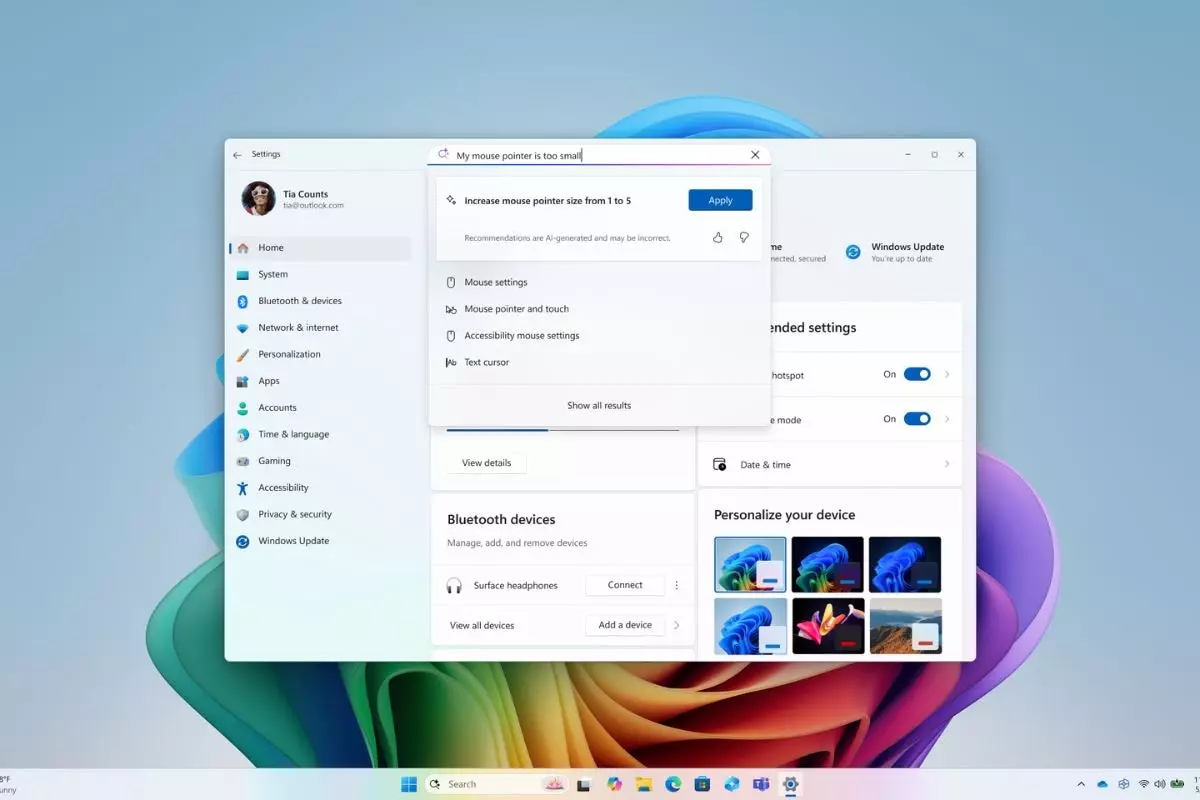Microsoft’s unveiling of Mu, an on-device artificial intelligence model, signifies a critical shift in the tech landscape. Historically, the prevailing trend has been to outsource processing power and storage to cloud-based systems, which raises concerns about privacy and latency. Local solutions, particularly ones like Mu which can run entirely on a user’s device, promise to mitigate these concerns by allowing for faster, more secure interactions. However, this reorientation signifies more than just technological advancement; it beckons us to reconsider how we interact with our devices.
Mu isn’t merely a boost in processing capability; it represents a pivotal moment where personal computing advances towards becoming more intuitive and user-friendly. The integration of AI agents within Windows 11 epitomizes this ambition, allowing the operating system to respond to user queries in natural language. This offers a tantalizing glimpse into a future where technology can seamlessly blend into daily life, aligning with user needs rather than forcing compliance with rigid command structures.
Technical Triumph or Overreach?
While Microsoft’s claims about Mu’s efficacy are impressive, they also merit scrutiny. With 330 million tokens optimized for local processing on neural processing units (NPUs), the architecture may be efficient, yet it raises questions about whether they’re prioritizing speed over depth. Can we genuinely trust a model that learns from vast but potentially simplistic datasets? This raises an important issue of validity against the backdrop of sophistication.
The assertion that Mu competes with its predecessor Phi-3.5-mini, yet occupies merely 10% of its size, sounds revolutionary, but this comparison must be cautiously examined. Such downsizing may lead to surface-level responses; it challenges the notion of how “intelligence” should be defined. Does performance in terms of response speed mean the AI is genuinely understanding the complexities of human communication, or merely regurgitating learned patterns?
The Dichotomy of User Queries
One notable feature of Mu is its enhanced functionality over multi-word queries compared to shorter, ambiguous instructions. While this demonstrates an advanced level of contextual comprehension, it risks alienating users who might prefer or need brevity. In the digital age where rapid interactions dominate our screens, insisting on elaboration can be seen as a barrier to access rather than a feature.
Moreover, the current focus on commonly used settings exposes a discernible downside. The digital world thrives on diversity of needs; when algorithms ignore the less frequent but equally valid user intentions, they inadvertently stifle potential use cases. Thus, while Mu aims to streamline interactions, it also runs the risk of becoming a walled garden where only the popular is prioritized, leaving a multitude of nuanced user requirements in the shadows.
Rethinking Technological Dependence
As we stand on the precipice of a new era in personal computing, we must question our growing reliance on AI models like Mu. This technology is designed to improve user experience, and while that is commendable, it may further entrench our dependence on artificial intelligence for basic tasks. The implications are profound: as our responsibilities increasingly shift to these models, we risk dulling our own capacities for critical thinking and problem-solving.
The approach taken by Microsoft invites a broader conversation on ethics in AI-augmented systems. With every advancement, we need to scrutinize how we shape not only our technology but also our habits. Are we ceding too much control to algorithms that, while powerful, lack a true understanding of human nuance? By urging the user to input more detail, does Mu serve its purpose, or does it serve as a reminder of our own cognitive shortcuts?
The Future Awaits
As software giants like Microsoft stride boldly into this new frontier with models like Mu, consumers are left with the dual responsibility of embracing innovation while maintaining a vigilant eye on its ramifications. This technological leap offers the promise of a more integrated, responsive experience, yet it compels us to engage critically with the tools that are increasingly defining our interaction with the digital landscape. As we herald this new AI-driven potential, we must strive for balance, ensuring that the brilliance of convenience does not eclipse our autonomy and intellect.


Leave a Reply